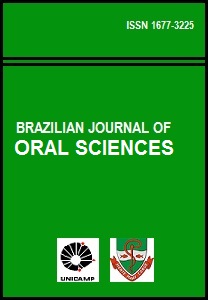Abstract
Aim: The aim of this systematic review was to evaluate the existing literature about the effects of bonded rapid maxillary expansion appliance (BRMEA) on vertical and sagittal dimensions, and the possible advantages of its use. Methods: A comprehensive search was performed in Medline, Pubmed, and Web of Science full-text electronic journal databases to retrieve English-language articles referring to BRMA. The inclusion criteria to initially select abstracts were: human clinical trials involving the use of BRMEA, measurements made from lateral cephalometric radiographs, no surgical treatments or clinical reports. From a total of 24 abstracts dealing BRMEA, only 7 fulfilled all inclusion criteria. After reading the full text articles, 4 remained. Results: Critical review of these papers revealed a great heterogeneity in the methodologies regarding the evaluation periods, sample characteristics, linear and angular cephalometric measurements. The studies presented on this review showed that the vertical effects are only partially controlled with bonded devices. Conclusion: There is not sufficient evidence to support the use of BRMEA to control the undesirable effects of rapid maxillary expansion (RME). There is a need to study RME with BRMEA considering the patient’s facial patterns in order to determine whether this appliance is actually efficient in controlling the undesirable effects of RME.The Brazilian Journal of Oral Sciences uses the Creative Commons license (CC), thus preserving the integrity of the articles in an open access environment.
Downloads
Download data is not yet available.

